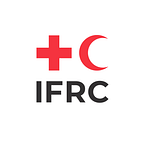2014 in pictures
For Red Cross and Red Crescent societies, each year brings new challenges. 2014 saw the Philippines recovering from the most powerful storm to ever make landfall, in Syria, Central African Republic and South Sudan, violence continued and new sources of conflicts appeared around the world.
You can find more about all these stories, and others on www.ifrc.org
The Red Cross Red Crescent is the world’s largest volunteer organization with 17 million volunteers in 189 countries. We respond to thousands of disasters and crises around the world every year.
To find out more, please contact your own National Society or visit www.ifrc.org.
